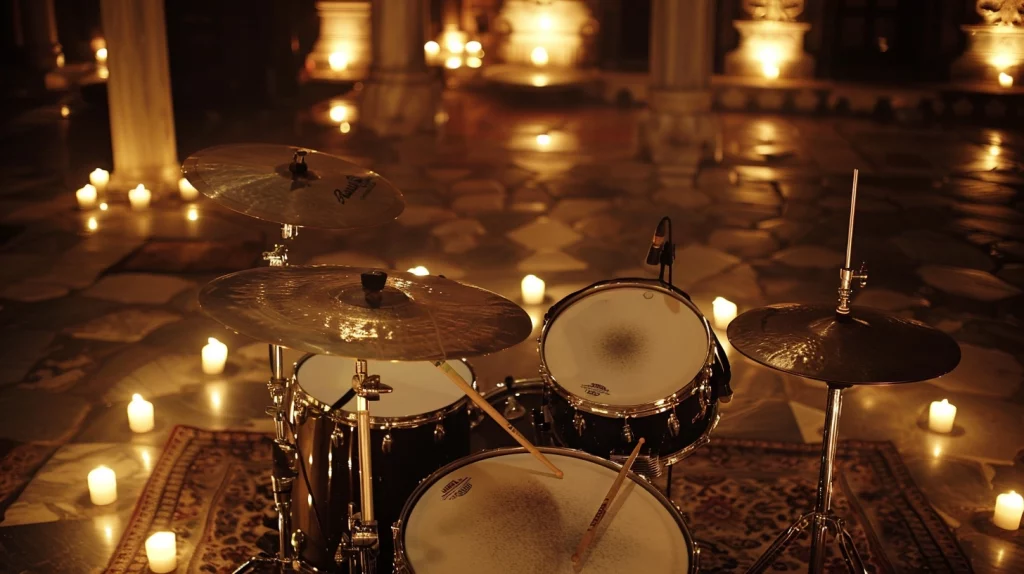Chad Smith is by far and away my favourite drummer in the world.
Here is a video of him playing – Bring Me The Horizon – for Drumeo.
He is just amazing at improv.
Tech, Business, Finance and Everything Else
Chad Smith is by far and away my favourite drummer in the world.
Here is a video of him playing – Bring Me The Horizon – for Drumeo.
He is just amazing at improv.
The largest music streaming services in India are:
These services reflect a mix of local and international offerings, catering to the diverse musical tastes of Indian listeners, with significant growth in streaming volumes reported in recent years.
RouteNote’s royalty payment process has some unique aspects compared to other distribution services:
Unlike some services that may have more complex pricing structures or longer payment delays, RouteNote aims to offer a straightforward and relatively quick payment process. However, it’s important to note that the actual speed of payments can vary depending on the type of royalty and the specific platforms involved.
RouteNote aims to ensure fair royalties for artists through several key practices:
While some users have reported issues with payments, these appear to be isolated incidents rather than systemic problems. RouteNote’s overall structure and policies are designed to provide fair and transparent royalty distribution to artists. However, as with any service, it’s crucial for artists to carefully read the terms of service, set up their payment information correctly, and maintain open communication with the company if any issues arise.
The music streaming service with the largest user base in India is Gaana, which boasts approximately 185 million monthly active users. Following closely is JioSaavn, which has over 200 million subscribers. Both platforms are significant players in the Indian music streaming market, reflecting the country’s growing appetite for digital music consumption. Other notable services include Spotify and YouTube Music, which also have substantial user bases but do not surpass Gaana and JioSaavn in terms of active users in India.
RouteNote’s payment process differs in a few key ways for master recording royalties versus compositional royalties:
While the basic payment process is similar, the key differences lie in the collection timeline, types of royalties, and the way RouteNote handles the revenue sharing for each royalty type.
Determining the “absolute easiest” DAW for beginners can be subjective, as individual learning styles and preferences vary. However, based on user feedback and general ease of use, some beginner-friendly DAW options include:
1. GarageBand (Mac only):
2. Ableton Live:
Amuseio AB, also known simply as Amuse, is a Swedish music distribution and artist services company. They offer a range of services to help independent artists release and manage their music careers.
You can read there financials here.
In the music industry, “owning your masters” is a phrase often thrown around, but what does it truly mean? For artists, understanding the concept of master ownership is crucial, as it significantly impacts their creative freedom, financial gain, and overall control over their music.
What are Music Masters?
Simply put, music masters are the original sound recordings of a song. These recordings include the final version of a song captured in a studio, encompassing the artist’s performance, instrumentation, mixing, and mastering. They are distinct from the musical composition itself, which falls under copyright protection as an intellectual property.
Why Owning Your Masters Matters:
Owning your masters grants you, the artist, a bundle of rights associated with the recordings, including:
Not Owning Your Masters:
When artists sign traditional record deals, they often give up ownership of their masters in exchange for upfront funding, production support, and distribution assistance. While this arrangement can be advantageous for launching a career, it means the record label retains ownership of the masters and controls the aforementioned rights.
Benefits of Owning Your Masters:
Challenges of Owning Your Masters:
The Decision:
Ultimately, the decision of whether or not to own your masters is a personal one that depends on your individual circumstances, career goals, and risk tolerance. Weighing the benefits and challenges carefully, alongside seeking professional guidance, can help you make an informed choice that aligns with your long-term vision as an artist.tunesharemore_vert
Tracklib is a music service that allows producers and artists to legally sample original music recordings for use in their own creations. It functions as a “record store for sampling” by offering a vast library of pre-cleared music and a streamlined process for obtaining licensing permission.
Here’s a breakdown of Tracklib’s key features:
Here’s what sets Tracklib apart from other sample resources:
However, it’s important to consider the limitations of Tracklib:
Overall, Tracklib provides a valuable tool for musicians seeking an efficient and legal way to incorporate high-quality samples into their music productions. However, it’s essential to weigh the costs and limitations against its benefits before deciding if it’s the right solution for your creative needs.
Distrokid and RouteNote are both great options for uploading your music into the worlds largest stores and streaming services. Here is a quick list of Pros and Cons for both.
DistroKid:
Pros:
Cons:
RouteNote:
Pros:
Cons:

SoundCloud’s ownership situation is currently in a state of flux, with potential changes on the horizon:
Current Shareholders:
Potential Sale:
Yes, DistroKid did recently increase their prices. All subscription tiers saw an increase between 11% and 15%. Some examples of the new prices include:
The price increase happened quietly sometime in late December 2023/early January 2024. Existing users with active subscriptions at the time of the increase are not affected and will continue to pay the original price until their renewal date.
The largest music streaming services in South Korea are:
These eight music streaming services account for over 98% of the total market share in South Korea. Melon is the clear market leader, with a market share of nearly 40%. Genie Music and YouTube Music are also very popular, with market shares of over 20% each. Flo, Vibe, and Kakao Music have smaller market shares, but they are still significant players in the market. Bugs Music and Apple Music have the smallest market shares, but they are still growing in popularity.
Here are the largest music streaming services in Thailand and their market share numbers in 2023:
| Rank | Music Streaming Service | Market Share (%) |
|---|---|---|
| 1 | Spotify | 55% |
| 2 | JOOX | 25% |
| 3 | Apple Music | 15% |
| 4 | Deezer | 5% |
| 5 | YouTube Music | 0.1% |
Spotify is the clear market leader in Thailand, with a market share of over 50%. This is due in part to its strong brand recognition and its wide selection of music and podcasts. JOOX and Apple Music are the second and third largest players, respectively, with market shares of 25% and 15%. Deezer and YouTube Music have smaller market shares of 5% and 0.1%, respectively.
The store, called “Tokyouniversal Music”, is dedicated to serving music superfans, and it features a wide range of Rolling Stones merchandise, including clothing, accessories, and home goods. It also has a listening room where fans can listen to the Stones’ music on high-quality equipment.
The store is located in the Harajuku district of Tokyo, which is known for its trendy and youthful atmosphere. It is expected to be a popular destination for both Japanese and international Rolling Stones fans.
The store’s opening comes at a time when the Rolling Stones are still enjoying a great deal of popularity in Japan. The band’s most recent tour of Japan was a sell-out, and their albums continue to sell well.
The opening of the new Rolling Stones store is a sign of the band’s continued popularity in Japan, and it is also a sign of the growing popularity of music superstores in the country.

According to Statista, the largest music streaming services in Indonesia with market share numbers as of 2023 are:
Joox is a music streaming service developed by Tencent Music Entertainment. It was launched in 2015 and is the most popular music streaming service in Indonesia, with over 50 million active users.
The growth of the music streaming market in Indonesia is being driven by a number of factors, including:
RouteNote Convert is a free online audio and image converter tool that allows users to convert their files between a variety of different formats. It is a popular tool for musicians, podcasters, and other creative professionals, as it allows them to easily convert their files to the required format for uploading to streaming services, social media, or other platforms.
RouteNote Convert supports a wide range of audio and image formats, including:
RouteNote Convert is easy to use and does not require any registration or installation. To use RouteNote Convert, simply upload your file and select the desired output format. The converted file will be available for download within seconds.
RouteNote Convert is a valuable tool for anyone who needs to convert their audio or image files. It is free, easy to use, and supports a wide range of formats.
Here are some of the benefits of using RouteNote Convert:
Spotify’s A class and B class shares differ in two key ways:
Other than these two differences, Class A and Class B shares have the same rights and obligations. This means that they receive the same dividends and have the same right to participate in any liquidations or distributions.
RouteNote is opening up its new music publishing platform to more musicians globally. Here is your ultimate guide in video form for music publishing collection.